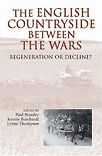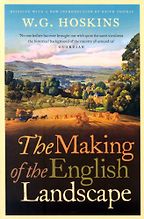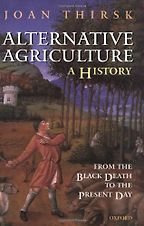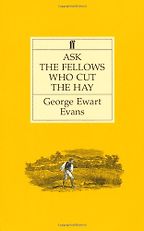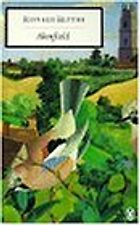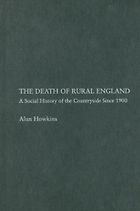What have been the most important changes to the English countryside in the last 100 years?
One of the main changes is the impact of the motor car. A hundred years ago if you lived in the middle of a city and you wanted to get out to the countryside, then you had to take a train, or cycle, or walk. The range of countryside you could look at was limited by cost or time. Now you can drive halfway across England, have a picnic, and drive back again all in a day. It also means that people can now commute to work. The countryside has become not only a place which produces food, but also a place where we go to live and enjoy ourselves. This is no bad thing: a lot of people say it’s terrible that there are all these newcomers, most of who commute out on a daily basis. But they may also have a positive impact on village society by bringing to it a wider range of concerns, interests and abilities.
Your first book describes the way these changes have physically affected the countryside. Tell me about your first book, The Making of the English Landscape.
The interesting thing about the book is that in effect it created an entirely new subject of landscape history. Hoskins and his colleague Maurice Beresford, as a result of walking in the English Midlands during the Second World War, realised that there was a whole story about the landscape that hadn’t really been told. He published the book in 1955. It examined the way in which the countryside had come to look as it does, starting from pre-historic times and going right up to the time of writing.
So the book has had a big impact on the way we think about the countryside?
Yes. Although subsequent scholars have disagreed with many of his arguments, his great contribution was to ask the original questions. The third edition is particularly interesting because it has an introduction and commentary by Christopher Taylor, who has been one of the leading later landscape historians. Taylor has inserted comments and criticisms at the points in the text where modern research differs from what Hoskins says, which means in effect you are getting two books for one.
Your next book talks about the way economic forces have affected the countryside. Tell me about Alternative Agriculture.
The full title, Alternative Agriculture: A History from the Black Death to the Present Day, gives you an idea about what the book is about. In many ways it sums up Joan Thirsk’s life’s work. The book is based around a very simple but powerful idea. Thirsk divides the history of agriculture into two sorts of period, ‘mainstream periods’ and ‘alternative periods’. In the ‘mainstream periods’ agriculture has focused on producing its principal products: cereals and meats. In the ‘alternative periods’, when the prices of cereals and meat tends to go down, farmers are forced to look for other ways of making money. She argues that it’s during these times that farmers come up with different ways of doing things. For example, in one of her alternative periods at the end of the 19th century, the modern dairy industry was born. Before this period most dairy farmers had focused on producing butter and cheese and only had a local market for milk, but when the demand for other products dropped farmers began to produce liquid milk for urban consumption. Obviously now milk is one of the mainstream industries. Her idea is that there are periods when there is less demand for whatever it might be and this forces agriculture to really question what it is doing and change.
Five Books interviews are expensive to produce. If you're enjoying this interview, please support us by donating a small amount.
But the agricultural industry tends to be thought of as one which finds it difficult to change. Do you agree with this view?
Agriculture does have this reputation for being very traditionalist. But it can be very dynamic. Farming can change incredibly rapidly when it needs to. Let’s go right back to the Black Death period: at least a third of the population died, taking out a large portion of the demand for basic food stuffs. What did people do? They said: ‘If we can’t sell grain, what can we sell?’ And that’s the start of an enormous expansion of wool production. A more recent example is the time between 1945 and 1965 when agriculture was innovating very rapidly; its rate of output growth was probably faster than the growth of British industry at the time. I would argue that agriculture is actually very flexible.
Tell us about your next book, Ask the Fellow Who Cuts the Hay, which focuses more on the people who live in the countryside.
The author, George Ewart Evans, was in many ways one of the pioneers of oral history. Back in the in the late 1940s and early 1950s he took one of those early tape-recorders which were very big and very cumbersome, and he went to talk to old people in East Anglia. These people had memories which went back well into the 19th century. He was almost talking about what seems like a pre-industrial society. He is very good at putting together their memories. The book is actually one of about four that he produced, and I could have picked any one of them, but this is the early one, and it’s a classic.
How different is the picture he paints of the countryside to anything we are familiar with?
The main difference is that it is a rural culture that Evans is describing. My kids were brought up in the countryside and their culture is based on computers; their assumptions about the world are indistinguishable from the cultural assumptions of their friends who live in towns. About 16 years ago I asked Godfrey Basely (the man who started The Archers on BBC Radio 4), when he was just coming up to his 90th birthday, what the main difference was between the countryside now and the countryside in which he grew up in the 1920s. He made this same point. Education and opportunities are far better in the countryside now than they were then, and the result is that, culturally, rural children are aware of the same kind of things as children from the towns. This has had a major impact on rural culture.
Your next book, Akenfield, is doing something very similar. Tell us about it.
Akenfield is another kind of oral history, and it’s also based in East Anglia. The difference is that the author did not go out with a tape-recorder. What he did was to just ask people about what had happened, and write up his recollections of people at a later date. Of course, the implications of this are quite significant. Rather than directly quoting people there is this mediation through a creative writing process. The result, however, is that you get this incredibly vivid picture of country life in a period of rapid change. He is talking about the changes to rural life up to the 1950s and 60s, which in many ways I’d argue were the most crucial periods of change, and the book gains its strength from Blythe’s total immersion in the area and society, and the fact that he is a superb writer.
If these books tell us about the past, your next book, The Death of Rural England,gives us some idea about what will happen in the future.
The Death of Rural England is a much more recent book. It is written by Alun Howkins, a historian who has officially retired, but is still actively writing. Its subtitle, The Social History of the Countryside Since 1900, again gives away what the book is about. The book summarises all the 20th-century changes that we’ve been talking about. If The Making of the English Landscape looks at the countryside from the beginning of human history in England, what The Death of Rural England is doing is looking at the changes to the countryside that we are familiar with. His title, The Death of Rural England, implicitly poses the question that I alluded to before, of whether a rural society remains as something different from urban society any more.
Get the weekly Five Books newsletter
What kind of changes to the countryside can we expect to happen in the future?
As a historian, I don’t do prophecy. As someone who just happens to live in the countryside, what I think is happening is a polarisation between the countryside of production (agri-business) and the countryside which people live in and use for leisure. But rural England has a long tradition of surprising us: that’s why predicting what’s going to happen is a mug’s game that I’m not going to play.
June 18, 2010. Updated: October 18, 2021
Five Books aims to keep its book recommendations and interviews up to date. If you are the interviewee and would like to update your choice of books (or even just what you say about them) please email us at [email protected]

